Table 1.
The Back Squat Assessment
| Criteria | Description | Correct | Incorrect | Deficit | Type | Comments | |
|---|---|---|---|---|---|---|---|
| Domain 1: Upper Body | |||||||
| ➀ | Head Position: | Line of neck is perpendicular to the ground and gaze is aimed forward. |
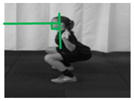
|
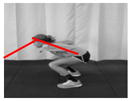
|
□ | Neuromuscular Strength Mobility |
|
| ➁ | Thoracic Position: | Chest is held upward and shoulder blades are retracted. |
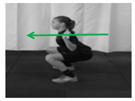
|
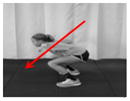
|
□ | Neuromuscular Strength Mobility |
|
| ➂ | Trunk Position: | Trunk is parallel to tibia, while maintaining slightly lordotic lumbar spine. |

|

|
□ | Neuromuscular Strength Mobility |
|
| Domain 2: Lower Body | |||||||
| ➃ | Hip Position: | Line of hips is parallel to ground in frontal plane throughout squat. |
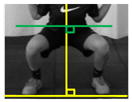
|
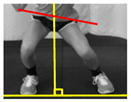
|
□ | Neuromuscular Strength Mobility |
|
| ➄ | Frontal Knee Position: | Lateral aspect of knee does not cross medial malleolus for either leg. |
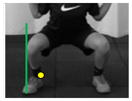
|
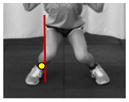
|
□ | Neuromuscular Strength Mobility |
|
| ➅ | Tibial Progression Angle: | Knees do not excessively pass the front of the foot. Tibias are parallel to an upright torso. |
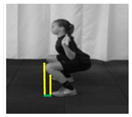
|
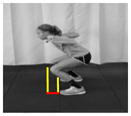
|
□ | Neuromuscular Strength Mobility |
|
| ➆ | Foot Position: | Entire foot remains in contact with the ground. |

|
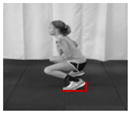
|
□ | Neuromuscular Strength Mobility |
|
| Domain 3: Movement Mechanics | |||||||
| ➇ | Descent: | Utilizes hip-hinge strategy at a controlled, constant speed throughout descent. Torso remains upright. |
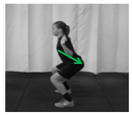
|
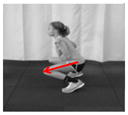
|
□ | Neuromuscular Strength Mobility |
|
| ➈ | Depth: | At apex of depth, the tops of thighs are at least parallel to the ground. |
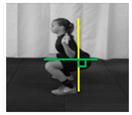
|
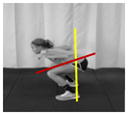
|
□ | Neuromuscular Strength Mobility |
|
| ➉ | Ascent: | Shoulders and hips rise at the same, constant speed to return to start position. Ascent: Descent timing ratio is at least 2:1. |
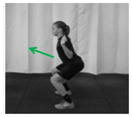
|
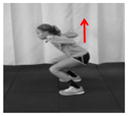
|
□ | Neuromuscular Strength Mobility |
|
| Total: | |||||||
